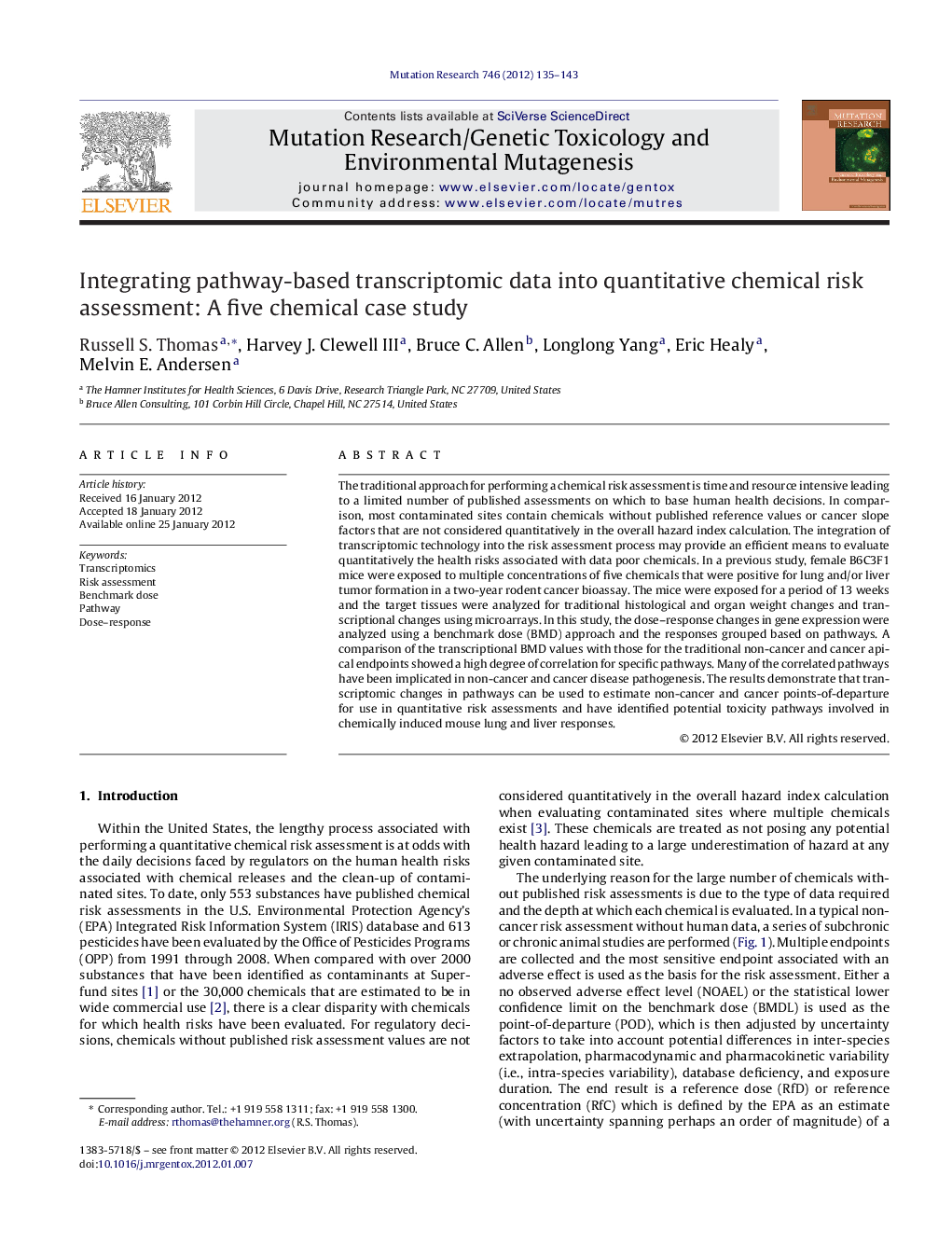| کد مقاله | کد نشریه | سال انتشار | مقاله انگلیسی | نسخه تمام متن |
|---|---|---|---|---|
| 2148131 | 1089537 | 2012 | 9 صفحه PDF | دانلود رایگان |

The traditional approach for performing a chemical risk assessment is time and resource intensive leading to a limited number of published assessments on which to base human health decisions. In comparison, most contaminated sites contain chemicals without published reference values or cancer slope factors that are not considered quantitatively in the overall hazard index calculation. The integration of transcriptomic technology into the risk assessment process may provide an efficient means to evaluate quantitatively the health risks associated with data poor chemicals. In a previous study, female B6C3F1 mice were exposed to multiple concentrations of five chemicals that were positive for lung and/or liver tumor formation in a two-year rodent cancer bioassay. The mice were exposed for a period of 13 weeks and the target tissues were analyzed for traditional histological and organ weight changes and transcriptional changes using microarrays. In this study, the dose–response changes in gene expression were analyzed using a benchmark dose (BMD) approach and the responses grouped based on pathways. A comparison of the transcriptional BMD values with those for the traditional non-cancer and cancer apical endpoints showed a high degree of correlation for specific pathways. Many of the correlated pathways have been implicated in non-cancer and cancer disease pathogenesis. The results demonstrate that transcriptomic changes in pathways can be used to estimate non-cancer and cancer points-of-departure for use in quantitative risk assessments and have identified potential toxicity pathways involved in chemically induced mouse lung and liver responses.
► Mice were exposed for 13 weeks in dose–response to five lung or liver carcinogens.
► Gene expression microarray analysis was performed on the target tissue.
► The data were analyzed using benchmark dose methods and summarized by pathway.
► Benchmark doses for specific pathways were correlated with pathological responses.
► Pathway-based transcriptomic changes can be used in chemical risk assessment.
Journal: Mutation Research/Genetic Toxicology and Environmental Mutagenesis - Volume 746, Issue 2, 15 August 2012, Pages 135–143